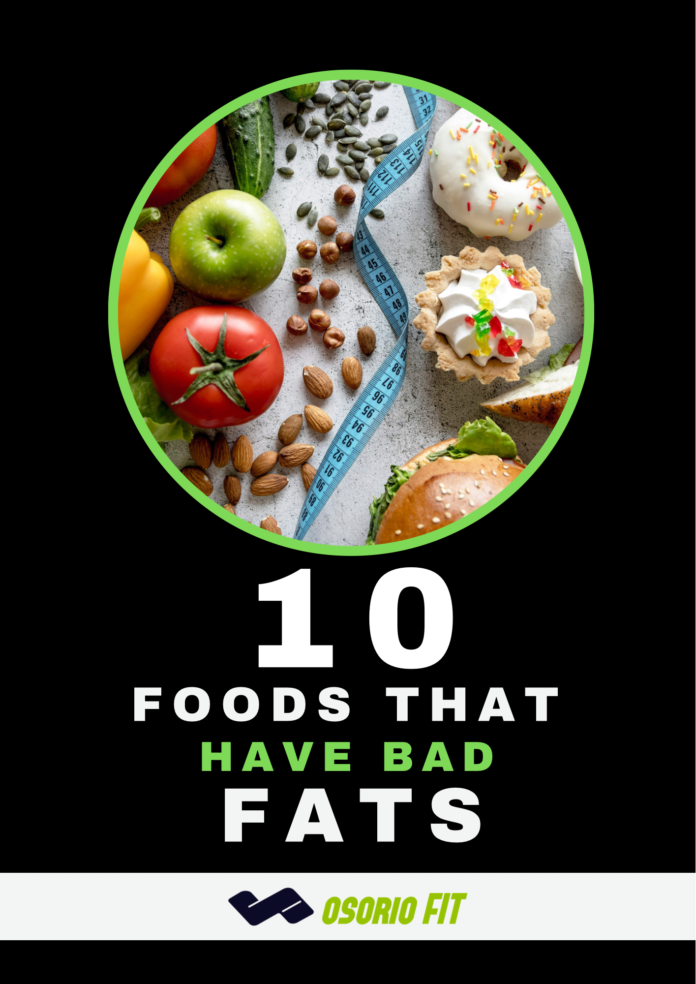Find out which 10 foods contain bad fats and how they affect your health. Know the risks of consuming them in excess and learn how to replace them with healthier options to maintain a balanced diet.
For the planet of athletes, food is one of the most important elements when looking for results in terms of goals we want to achieve, lose weight, gain muscle mass, among others.
In that order of ideas, fats are one of the food components that generates more doubts regarding their intake to achieve or not the specific objectives proposed.
It is said that all fats are bad, but in reality that is not entirely true, since there are different types of fats in the foods we consume daily, fats that even our body needs for its normal functioning.
Fats are one of the body’s main sources of energy, they are like that fuel tank we have to move, exercise and maintain a healthy physical condition and a healthy heart.
When we talk about fats we are referring to a set of dense organic substances, insoluble in water and known as lipids.
Some of the main functions of fats in our body are to build insulating layers, hold our organs in place, form an energy reserve for the body and later break down into sugars.
Types of fats
The different types of fats are classified according to their chemical composition, differentiating between those containing simpler or more complex bonds between molecules.
The fats that are known as unsaturated, are those that generally are denominated good fats, the same ones that help to take care of the heart, these in turn are subdivided in two types: polyunsaturated and monounsaturated.
Monounsaturated fats are popularly known as cholesterol, they raise the levels obtained from high density lipoproteins.
Polyunsaturated fats are made up of fatty acids of the Omega 3 and Omega 6 series, both of which have a direct effect in the form of cholesterol or in the form of sugars in the blood.
Saturated fats, on the other hand, are formed by fatty acids of long molecular chains, solid at room temperature and commonly of animal origin or vegetable oils.
We also find trans fats, which are highly harmful to health and the organism, promote the proliferation of triglycerides and are obtained from the hydrogenation of vegetable fatty oils.
Thus, the fats considered bad are saturated and trans fats, since they promote the accumulation of excessive fat in the walls of the arteries, which causes heart failure, hypertension and vascular accidents.
Examples of foods with bad fats
Going to the examples of bad fats, we can refer to dairy products that despite being generous in calcium, are great carriers of saturated fats, which is why people already choose them skimmed.
Cakes, cookies and baked goods should be investigated with respect to the type of fats used at the time of their production, hence some are more harmful than others, as well as fatty sauces such as mayonnaise.
Tropical oils, usually palm or coconut oil; red meats, whether beef or pork, contain a good amount of saturated fat, as well as products derived from them: animal shortenings or sausages.
Margarines and hydrogenated vegetable fat products, many countries have banned or restricted the sale of these products, as well as fast foods that contain trans and saturated fats in abundance.
Finally, the queen of bad fats, frying, the high temperatures to which foods are subjected denature the oils, producing low-quality saturated fats, not to mention the carbonized residues in reused oils.



